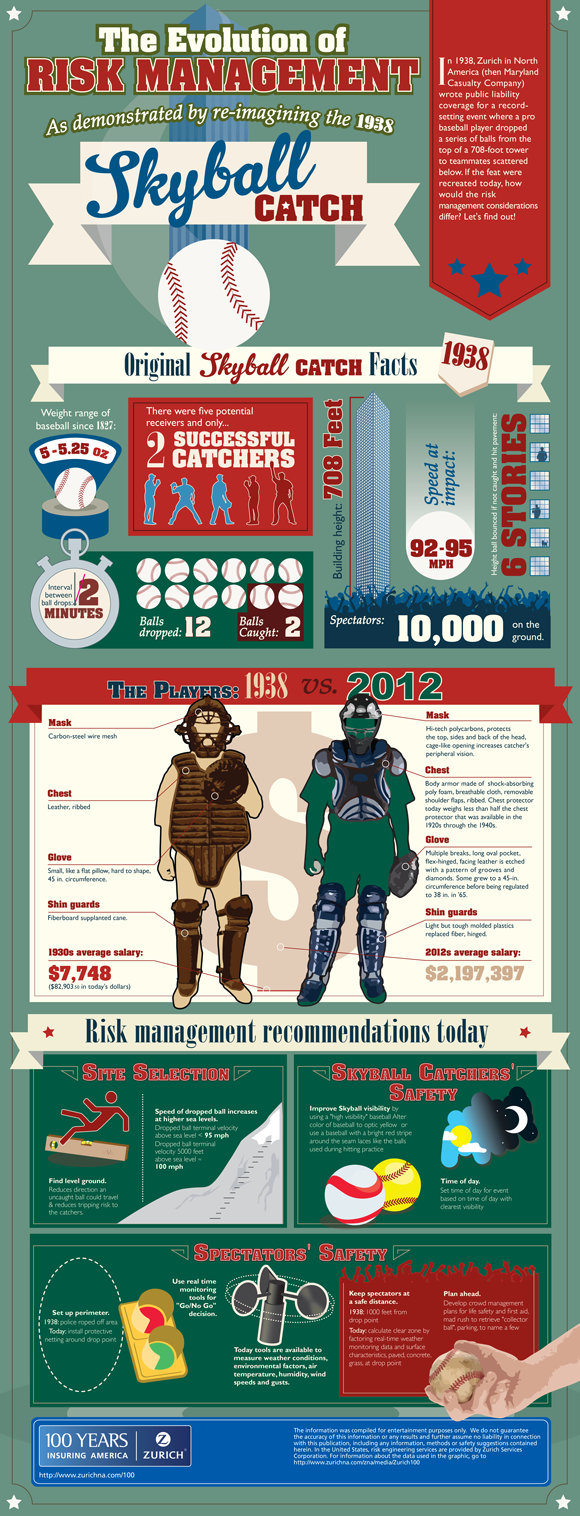In 1938, Schaumberg, Ill.-based Zurich North America wrote public liability coverage for the record-setting “Skyball Catch” –where five professional baseball players attempted to catch a ball tossed from the top of a 708-foot tower (two were successful) –risk management has evolved. Today’s organizations face a very different risk landscape that ranges from more defined first-party property losses and business interruption to less transparent liability from law suits and brand reputation damage. If such an event were organized today, many more risk factors would be considered in assessing the risk and in planning for it.

The risk of first-party property damage and business interruption losses is likely to be low, but the risk of liability from litigation and reputation loss from any adverse development at an event may be very significant. Planning for the event should consider various actions before, during and after.
Pre-event risk planning should consider various aspects of site selection and preparation, such as the type of ground surface, its rebound characteristics for a baseball not caught by a catcher, potential tripping hazards for the catcher on the ground, and clearance zone for spectator safety. Traffic flow, contracts and permits may also have to be considered.
At the time of the event, real-time weather conditions monitoring for wind speeds, precipitation, overcast conditions and temperature will be important for the safety aspect of go, no go decision for the event. The visibility and ability to track the ball during its descent path will help increase the chance of a successful catch with “high visibility” balls such as optic yellow or baseballs with a bright red stripe around the seam laces –similar to what is used during batting practice. Appropriate protective gear for the catcher also will be important.
Often neglected, but the one of the most important aspect of an effective risk management strategy, is the crisis management and communication planning in an unlikely event of any unexpected developments.
Much like the evolution of professional baseball players from part-time athletes to multi-millionaire icons, risk management has evolved into a much more sophisticated, systematic process over the last century. This lens on the vast risk landscape may be the primary reason why we don’t see Major League Baseball players lining up to recreate the “Skyball” catch of 1938 each year.
Source: Zurich North America
Was this article valuable?
Here are more articles you may enjoy.

 Supplemental Claims Don’t Need to Include Damage Estimates, Fed Appeals Court Says
Supplemental Claims Don’t Need to Include Damage Estimates, Fed Appeals Court Says  California Sees Two More Property Insurers Withdraw From Market
California Sees Two More Property Insurers Withdraw From Market  South Carolina Allows Out-of-State Adjusters After Massive Hail Storm
South Carolina Allows Out-of-State Adjusters After Massive Hail Storm  Zurich, Philadelphia, Others Ordered to Pay $345M to Cover Abuse Charges at Georgia School
Zurich, Philadelphia, Others Ordered to Pay $345M to Cover Abuse Charges at Georgia School 